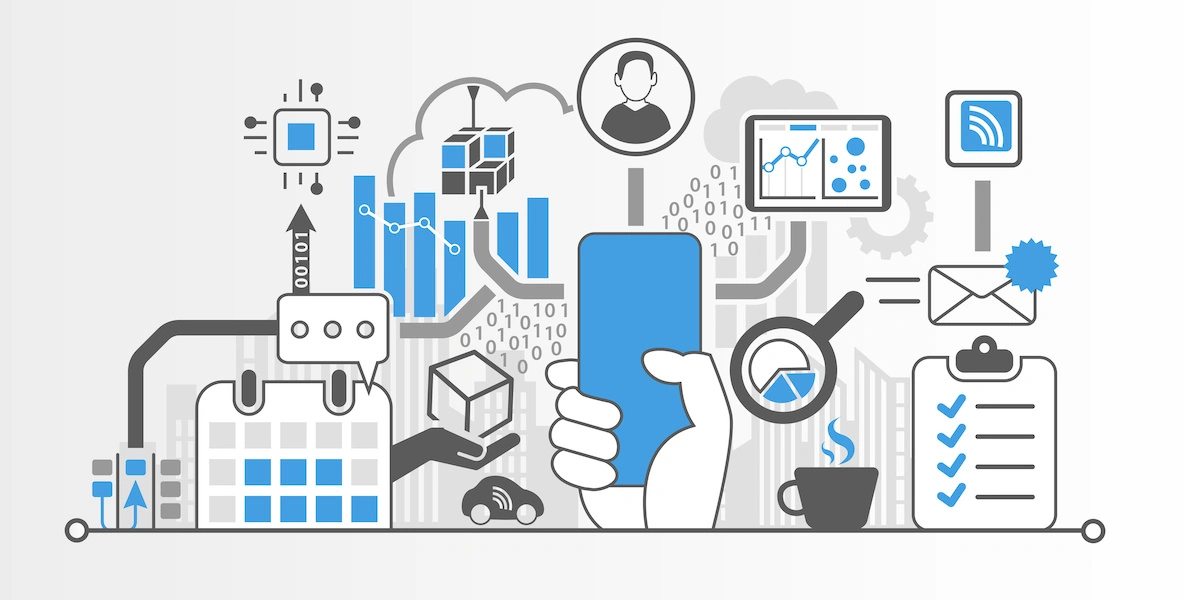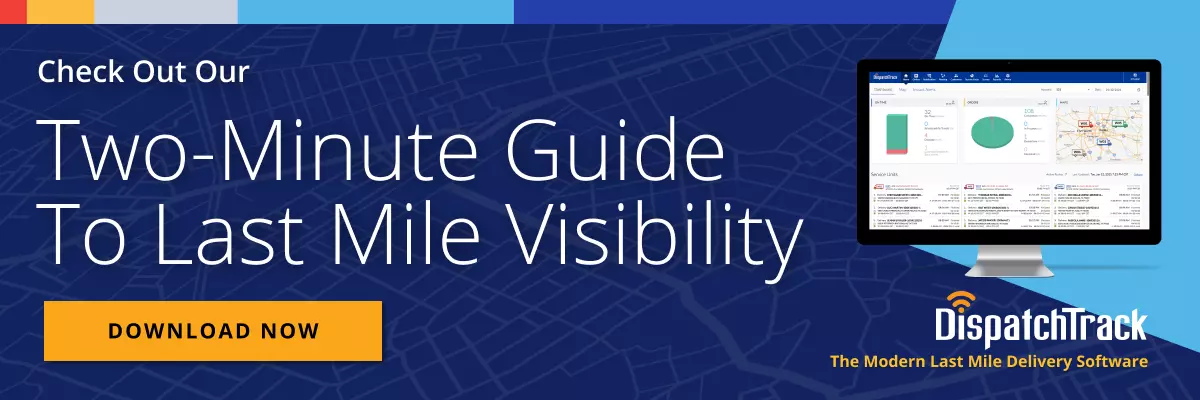A few years ago, it was a popularly cited figure that 70% of digital transformations fail to achieve their goals. It’s easy to imagine that that number has probably gotten a lot less eye-popping in the past two to three years—but at the same time, we’re not very far removed from an era in which billions of dollars in numerous different industries were being poured into initiatives that, seemed incredibly urgent but were extremely difficult to pull off successfully.

Digital transformation—i.e. leveraging digital technologies like AI and machine learning to create smarter, more streamlined, and more efficient holistic business processes—has only become more integral to success recently. And that’s especially true when it comes to last mile deliveries. Consumer expectations are at an all time high, and so are delivery costs, which means that smart, cost-efficient processes are non-negotiable.
And yet, most businesses still have trouble making these kinds of initiatives successful. So what are the top reasons that digital transformations in last mile delivery fail, and what can your organization do to overcome those hurdles?
1. Prioritizing the Right Plan
This one holds true well beyond last mile delivery logistics. As a Harvard Business Review piece argued recently, digital transformations aren’t really about technology—they’re about people. That includes both the internal stakeholders within your business and your customers or clients. Adopting technology for its own sake is a surefire way to create disconnect between your operational goals and your actual business processes. Sure, everyone wants to adopt things like AI to power their delivery management—but technology adoption needs to be driven by desired business outcomes, not the other way around.
Here, the best practice is to start by sketching out what, exactly, the short-, medium-, and long-term goals are when it comes to your last mile delivery logistics. What do you want your last mile deliveries to look like from a customer perspective? What about from the driver or dispatcher’s perspective? Where and how do you envision growing within the next few years? Where do you think your current processes can be improved?
If you use the answers to these questions as a guidepost for envisioning your dream supply chain, you can be much more intentional about how you adopt and deploy technology—ultimately powering closer alignment between your tech stack and your business goals.
2. Cutting Through Complexity
One of the things that makes digital transformation in last mile logistics so imperative is the sheer complexity of what you’re trying to transform. In a B2C context, businesses need to be able to turn customer time window preferences, fleet capacity parameters, and other factors into feasible delivery routes, and execute on those routes in a smart, visible way. When you’re making recurring deliveries to other businesses, things get even trickier, potentially involving a blend of static and dynamic routes, complex territory optimizations, and other service questions.
Too often, digital technology in this area has the effect of making all this complexity somehow more complex. Many legacy solutions are so difficult to use that planning for things like efficient sales territories becomes an even more niche process that can only be carried out by a tiny number of subject matter experts. There’s no denying that there’s a ton of data to grapple with when optimizing deliveries—but it should be pretty easy to imagine how overly complicated processes can become inflexible and difficult to scale.
Here, businesses need to find digital technology that actually grapples with the tremendous quantities of data and the tremendous intricacy of planning processes without completely overwhelming users. Whatever new solutions and processes you put in place as part of your digital initiatives, they should empower users to actually cut through the complexity of last mile logistics. Processes should be easily legible and software should be easy to use, otherwise you’ve just introduced a new layer of complexity into an already difficult leg of the supply chain.
3. Staying Flexible
Flexibility is, of course, deeply connected with complexity and ease-of-use. When you can’t run what-if scenarios because it’s impossible to account for all the variables, that makes your supply chain optimization plans a lot less flexible. If you need a specialist to come in and model the potential impacts of changing the location of a distribution center, you can’t make that decision at the speed of business.
Again, ease of use in your software deployments is paramount. The whole point of a digital transformation is to future-proof your last mile delivery management, which is impossible to do if you’ve boxed yourself into a situation where making even the simplest changes to your distribution network or operations requires incredibly specialized skills. Instead, look for software that’s designed to empower users up and down the organization.
Not only does this mean offering intuitive UI, it means offering speed and processing power that’s equal to the task of routing, running what-if scenarios, providing visibility, and enabling real-time adjustments—all at scale. When you can make that a reality, you can ensure that you’re continually adapting to a changing delivery market.
4. Handling Change Management
Of course, no matter how powerful your software is, it can be a real challenge to change last mile delivery software companies and get your new tech stack up and running and your people up to speed without huge disruptions to your day-to-day operations. Digital transformation is supposed to be just that: transformative. But it’s certainly possible to upgrade the way you handle last mile deliveries without causing widespread unease among your current staff, drivers, and customers. Here are a few ways to do that:
- Prioritize ease-of-use: We’ve already talked about this at length, but the difference between getting dispatchers, managers, and drivers excited about new ways of doing things can be profound depending on whether the new methods are easier than the old or more difficult.
- Ensure a rapid rollout: Before you deploy a new tech stack across your operations, you may want a partial deployment as a proof of concept or a trial period. But once you’ve decided that a particular solution is the right course of action, you want to be sure that you can roll it out quickly and efficiently without having to run multiple systems in parallel for months or years.
- Make sure the benefits to users are obvious: This will largely happen through trainings and informational sessions, but when you can easily articulate how planners can run what-if scenarios with the push of a button or drivers can upsell right at the job site, you can build momentum and get everybody on board for smarter ways of handling the last mile.
5. Staying Connected with Customers
Last mile deliveries are, at the end of the day, all about serving your customers. It often seems like it’s become harder and harder to do that in a way that’s cost-effective and sustainable in the long term—but successful long-term business strategies keep customers front and center.
Unfortunately, it’s easy enough to be so focused on internal processes as you undergo digital transformation that you lose focus on what these changes will mean for current and future customers. Yes, you want your new processes to be efficient—but you also want to raise the standard of customer service that you provide by consistently delivering on-time, providing transparency, and enabling connectivity between yourself, your drivers, and your customers. All of the back-office efficiency gains in the world can’t create a blueprint for success if you have to spend all that recouped time dealing with irate customers whose deliveries didn’t show up at the right time.
Simply put, you should aim to update your technology in such a way that increases the connectivity you have with your customers. That might mean delivery management tools that are SaaS-based and therefore interoperable with client systems, or it might just be a matter of leveraging software that enables you to directly communicate about deliveries, send invoices, etc. Either way, this will help you keep your customers top of mind throughout the process. With any luck, the result will be a transformation that delights your customer base while making your life considerably easier.
